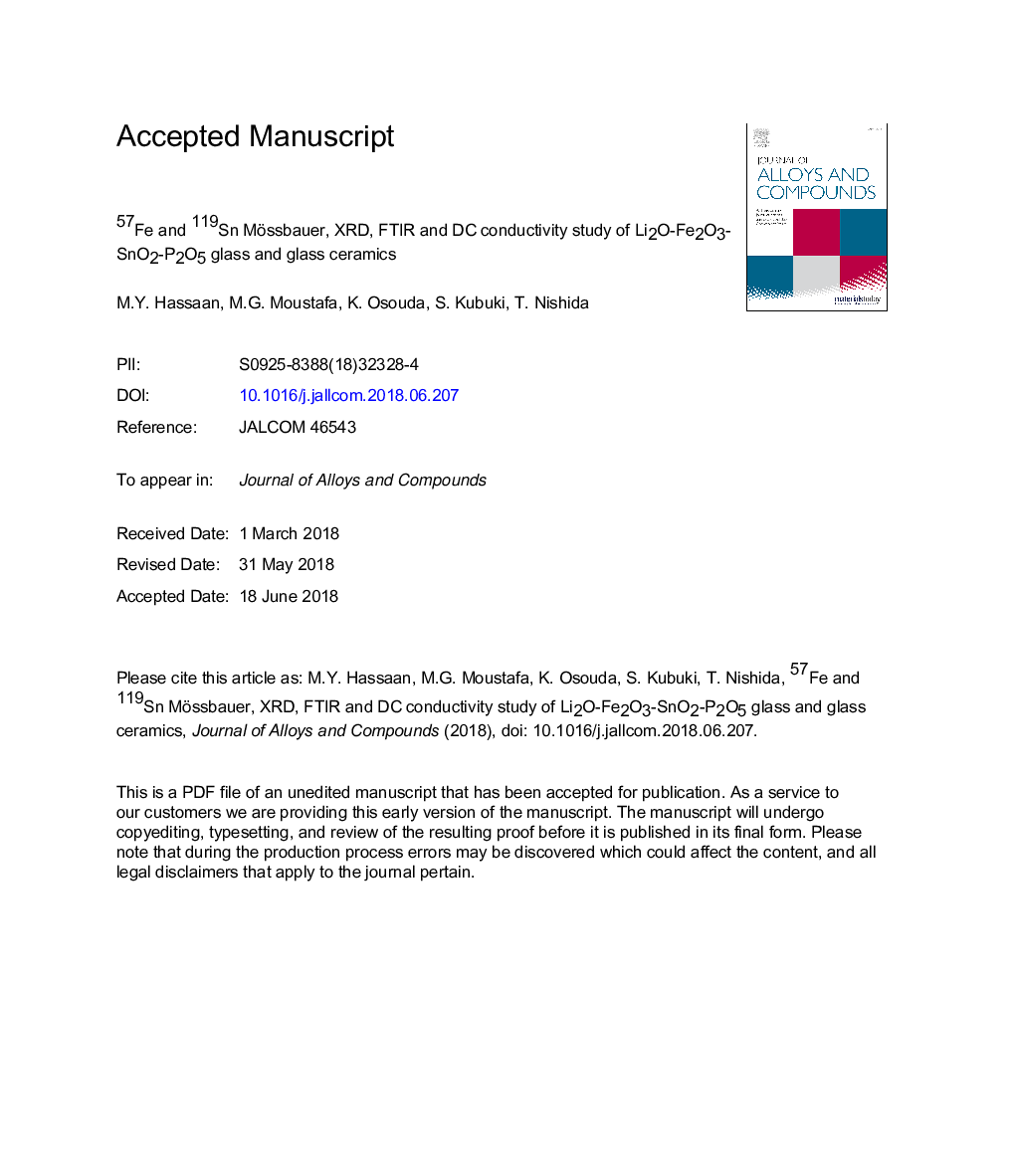| Article ID | Journal | Published Year | Pages | File Type |
|---|---|---|---|---|
| 7990471 | Journal of Alloys and Compounds | 2018 | 21 Pages |
Abstract
Glass samples with a composition of 1.5Li2O
- (1.5-x)Fe2O3
- xSnO2
- 3P2O5 (xâ¯=â¯0.1, 0.3 and 0.5) were prepared by melt-quench method. X-ray diffraction (XRD) study revealed the glass formation of the as-quenched samples. Each glass sample was heat treated (HT) at 600â¯Â°C for 1â¯h to obtain glass ceramics. HT samples showed precipitation of a small amount of crystalline particles assigned to LiFeP2O7. Local structure of these samples was explored by means of Fourier transform infrared spectroscopy and Mössbauer spectroscopy. They proved that Fe3+ ions occupied the sites of network former, while Fe2+ and Sn4+ the sites of network modifier. DC conductivity (Ï) measurement of these samples showed non-linear temperature dependency. Activation energy showed a slight decrease with an increasing amount of SnO2, and the Ï measured at 500â¯K increased from 5.6â¯Ãâ¯10â5 to 3.9â¯Ãâ¯10â4â¯Sâ¯cmâ1. The Ï values of HT samples were one-order of magnitude larger than those of the corresponded as-quenched glass samples, reflecting structural relaxation of the 3D-network composed of distorted FeO4 and PO4 tetrahedra. The approximated ratio of electronic-to ionic-conduction, Ïelec/Ïion, suggested that the conduction became predominantly “ionic” at high temperatures. The present study will be useful for the development of new cathode active material and solid state electrolyte for lithium ion battery.
- (1.5-x)Fe2O3
- xSnO2
- 3P2O5 (xâ¯=â¯0.1, 0.3 and 0.5) were prepared by melt-quench method. X-ray diffraction (XRD) study revealed the glass formation of the as-quenched samples. Each glass sample was heat treated (HT) at 600â¯Â°C for 1â¯h to obtain glass ceramics. HT samples showed precipitation of a small amount of crystalline particles assigned to LiFeP2O7. Local structure of these samples was explored by means of Fourier transform infrared spectroscopy and Mössbauer spectroscopy. They proved that Fe3+ ions occupied the sites of network former, while Fe2+ and Sn4+ the sites of network modifier. DC conductivity (Ï) measurement of these samples showed non-linear temperature dependency. Activation energy showed a slight decrease with an increasing amount of SnO2, and the Ï measured at 500â¯K increased from 5.6â¯Ãâ¯10â5 to 3.9â¯Ãâ¯10â4â¯Sâ¯cmâ1. The Ï values of HT samples were one-order of magnitude larger than those of the corresponded as-quenched glass samples, reflecting structural relaxation of the 3D-network composed of distorted FeO4 and PO4 tetrahedra. The approximated ratio of electronic-to ionic-conduction, Ïelec/Ïion, suggested that the conduction became predominantly “ionic” at high temperatures. The present study will be useful for the development of new cathode active material and solid state electrolyte for lithium ion battery.
Related Topics
Physical Sciences and Engineering
Materials Science
Metals and Alloys
Authors
M.Y. Hassaan, M.G. Moustafa, K. Osouda, S. Kubuki, T. Nishida,
